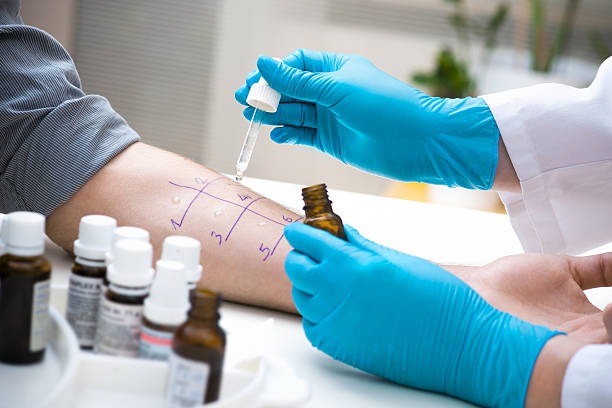
DERMATOLOGICAL EFFICACY TESTS
Dermatological Efficacy Tests are tests conducted to evaluate the effects and performance of cosmetic, dermocosmetic, and even some medical products on the skin using scientific methods. These tests aim to prove the safety, efficacy, and claimed effects of the products (moisturizing, anti-aging, skin lightening, acne treatment, etc.).
Why are Dermatological Efficacy Tests Conducted?
To Assess Product Safety: To determine whether the product causes any irritation, allergic reaction, or adverse effect on the skin.
To Prove Product Efficacy: To verify whether the product provides the claimed effects (moisturizing, wrinkle reduction, skin lightening, etc.) with objective and scientific data.
To Optimize Product Performance: To provide data for the development and improvement of product formulation.
To Meet Legal Requirements: In some countries, dermatological testing is a legal requirement to make certain product claims.
To Increase Consumer Confidence: Scientifically proving the effects of products on the skin increases consumers' confidence in the product.
To Support Marketing and Advertising Activities: To provide strong and reliable data to support the effects and benefits of products.
How are Dermatological Efficacy Tests Conducted?
These tests are generally carried out under the supervision of dermatologists, after obtaining ethical committee approval and having signed informed consent forms. The tests can be performed using in vivo (on live human subjects) or in vitro (in a laboratory environment, on cell cultures or artificial skin models) methods.


Commonly Used Dermatological Efficacy Tests:
1. In Vivo Tests (On Human Subjects):
Moisturization Test: Devices such as the Corneometer are used to measure the skin's moisture level.
Transepidermal Water Loss (TEWL) Test: Devices such as the Tewameter are used to evaluate the skin barrier function.
Skin Elasticity Test: Devices such as the Cutometer are used to measure skin firmness and elasticity.
Anti-Wrinkle Tests (Anti-Aging): Devices such as Visioline, Primos, or high-resolution photo analysis are used to measure wrinkle depth, length, and volume.
Skin Tone and Skin Lightening Tests: Devices such as the Mexameter, Chromameter, or spectrophotometers are used to measure skin color and melanin content.
Sebum Measurement (Skin Oiliness): Devices such as the Sebumeter are used to measure skin oiliness.
Anti-Acne Tests: Clinical evaluation and photo analysis are used to assess the number, size, and severity of acne lesions.
Anti-Cellulite Tests: The Nürnberger-Müller Scale or devices such as Visioline are used to evaluate the appearance of cellulite.
Wound Healing Tests: Methods such as clinical evaluation, photo analysis, and biopsy can be used to assess the wound healing process.
Sensory Tests/Panel Tests: Consumer panels are used to evaluate the sensory properties of the product, such as texture, scent, and after-feel on the skin.
Application Test (Use Test): These are tests where real users use the product for a certain period and evaluate their experience and the effects of the product.
Comparative Application Test: A test in which the effectiveness of multiple products is evaluated by comparing them on the same group of subjects.
Sun Protection Factor (SPF) Test: Conducted to determine the level of protection of sunscreen products against UVB rays.
UVA Protection Factor (UVAPF) Test: Conducted to determine the level of protection of sunscreen products against UVA rays.
2. In Vitro Tests (In the Laboratory Environment):
Cell Culture Tests: Tests performed on skin cells (keratinocytes, fibroblasts, melanocytes) are used to evaluate the effects of products at the cellular level (for example, collagen synthesis, melanin production).
Artificial Skin Models: Tests performed on three-dimensional artificial skin models are used to evaluate the effects of products on the skin in a more realistic environment.
Enzymatic Tests: Used to measure the effects on specific enzyme activities (for example, antioxidant activity, MMP inhibition).
Contact Us to Begin Your Dermatological Efficacy Testing Process.
We offer affordable and effective solutions tailored to your needs.
The information presented on this website does not constitute legal advice and is intended for informational purposes only. KompassEurope.com.tr assumes no responsibility for any errors or omissions in the information contained on this website. Any decisions made or actions taken by the reader based on this information are solely at the reader's own risk, and KompassEurope.com.tr shall not be held liable for any legal consequences arising from such decisions or actions. Readers are strongly advised to seek professional legal counsel regarding their specific circumstances and concerns.
© 2025 Kompass Europe. All rights reserved. The contents of this website belong to Kompass Europe and are protected by copyright laws. Copying, publishing, distributing or any commercial use of the information on the website is possible only with written permission. By using this site, you agree to our Terms of Use and Privacy Policy.
